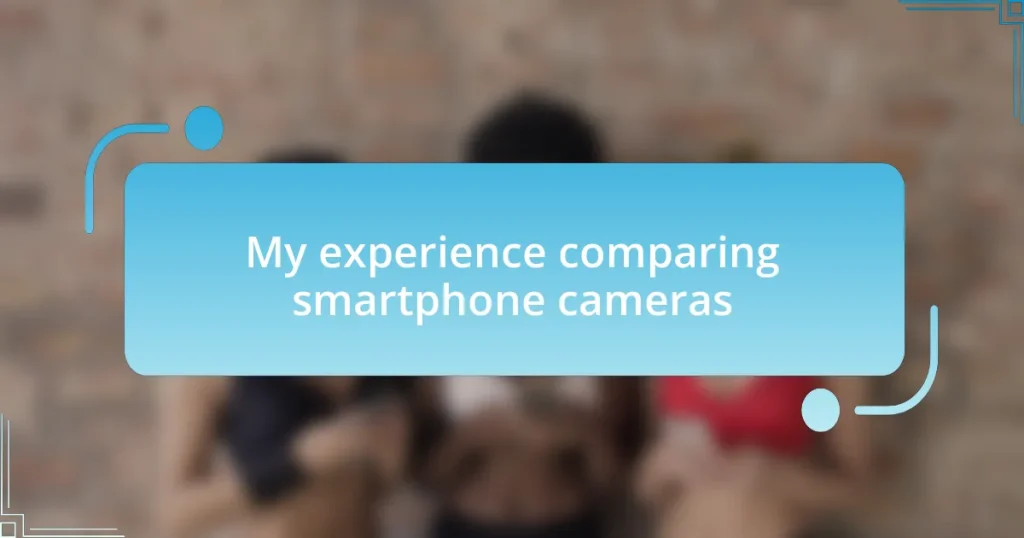Key takeaways:
- The evolution of smartphone camera technology has significantly enhanced photo quality, especially in diverse lighting conditions.
- Key features like aperture, lens variety, and image processing greatly influence the performance and results of smartphone photography.
- Hands-on testing and real-world comparisons are crucial in understanding the practical capabilities of different smartphones.
- The emotional connection and storytelling ability of a camera are more important than technical specifications alone.
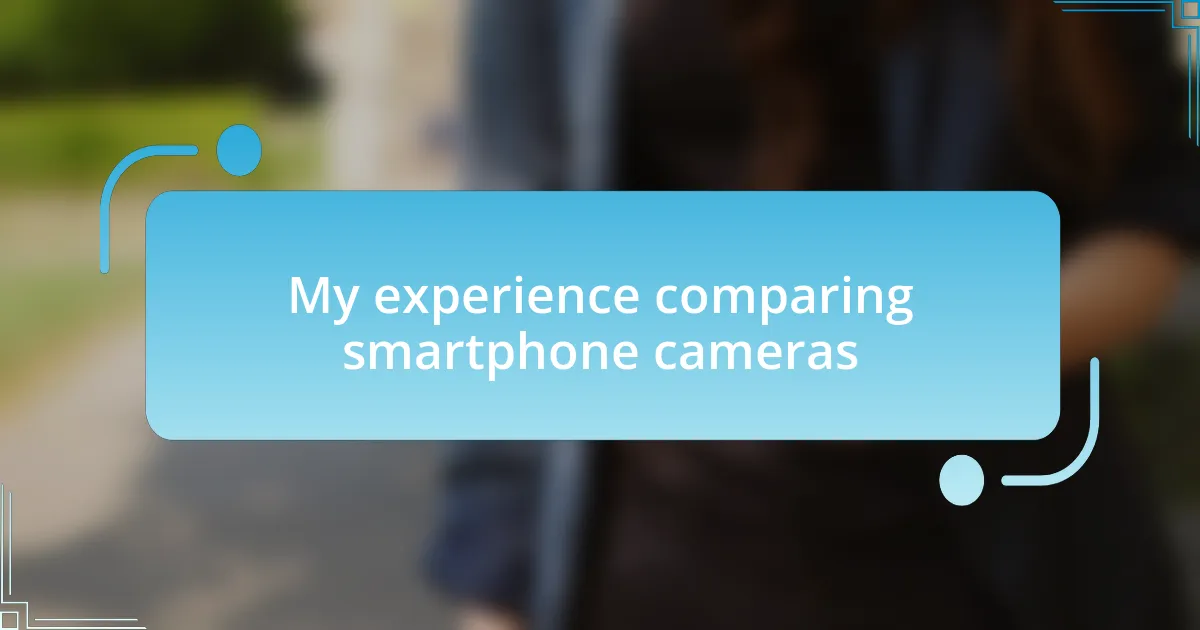
My experience comparing smartphone cameras
When I first started comparing smartphone cameras, I was blown away by how much technology has advanced. I vividly remember taking my dog for a walk, where I snapped a photo of him with my old phone and then with a newer model side by side. The difference in clarity and color saturation was astonishing; it felt like I had stepped into a new world of photography.
What surprised me most was how much the different camera settings could impact a simple snapshot. One day, I played around with the night mode feature at a local festival, capturing vibrant lights and candid moments. It was a game changer because it made me realize how much potential there is in smartphone photography, even in less-than-ideal lighting conditions.
Have you ever felt the thrill of capturing the perfect moment? I recall an instance when I was at a family gathering and decided to experiment with portrait mode. The result was a stunning photo that brought out the warmth of smiles and the glow of laughter. It struck me that with the right camera, everyday moments can transform into beautiful memories worthy of sharing.
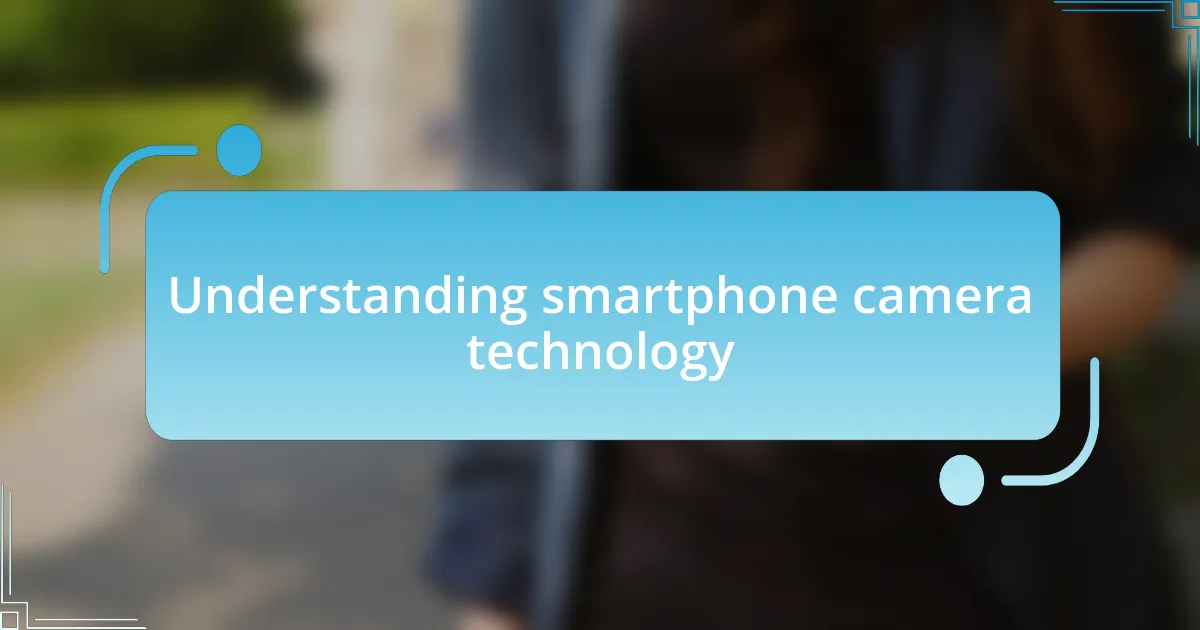
Understanding smartphone camera technology
Smartphone camera technology has evolved tremendously, with features that were once reserved for professional cameras now fitting snugly in our pockets. I can still remember the excitement I felt unboxing my first smartphone with a dual-lens setup; it felt futuristic. The way depth perception works with these lenses can seriously elevate a photo, allowing for creative effects that draw focus to the subject, making even the simplest moment feel meaningful.
Here are a few key points to consider when exploring smartphone camera technology:
- Megapixels: While higher megapixels can enhance resolution, it’s not the only factor for quality photos.
- Aperture: This determines how much light enters the camera; a larger aperture allows for better low-light performance.
- Image Processing: Smartphones use software algorithms to enhance images, affecting color accuracy and sharpness.
- Lens Variety: Many smartphones now come with wide-angle and telephoto lenses, allowing for creative versatility.
- Optical vs. Digital Zoom: Optical zoom maintains quality as it uses the physical lens, while digital zoom can lead to pixelation.
I’ve also come to appreciate the role of image stabilization. There was a time I was on a hiking trip, trying to capture the breathtaking view. My previous phone would often produce shaky images, but with newer models featuring optical image stabilization, I was amazed at how steady my shots turned out, even while on the move. It’s those little moments, where technology truly enhances our ability to capture life’s adventures, that remind me of the incredible journey smartphone cameras have taken us on.
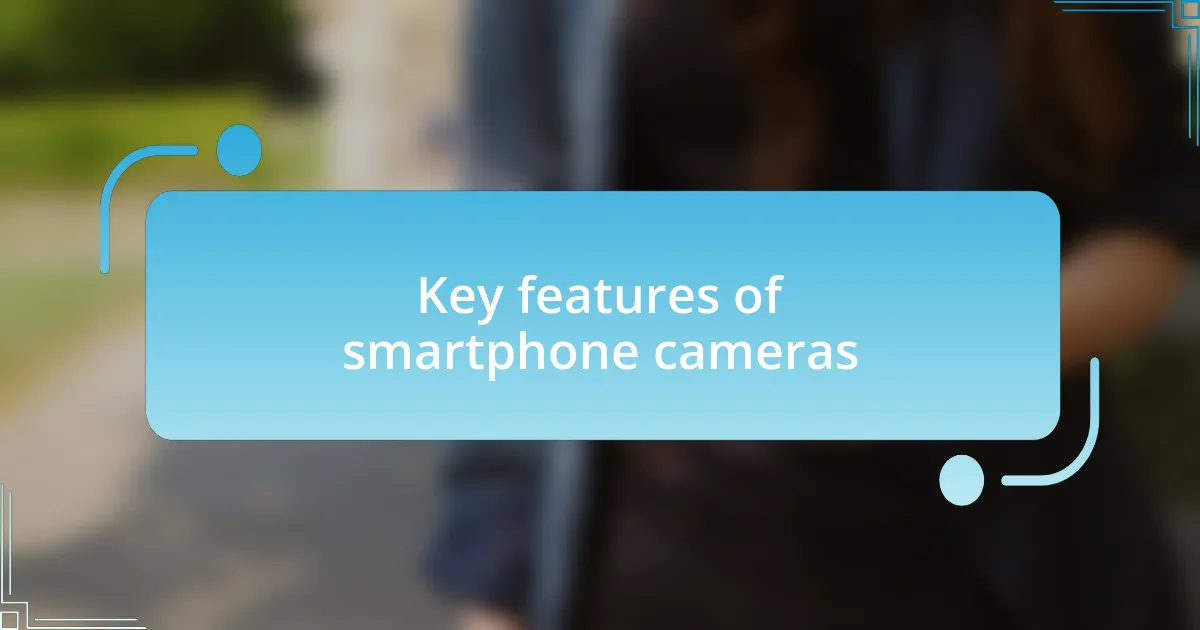
Key features of smartphone cameras
When assessing smartphone cameras, several key features play a crucial role in determining overall performance. I’ve often found myself drawn to the significance of the lens quality; it can remarkably affect clarity and color. For example, I remember taking sunset photos during a beach trip. The colors were vibrant and true to life, and I realized the lens made a significant difference in capturing those hues accurately.
Aperture is another essential feature I can’t overlook. It’s fascinating how a mere fraction of space can change everything about a shot. I once experimented with a night-time cityscape, utilizing a phone with a larger aperture. The resulting images were bright and full of detail, showcasing the city’s nightlife beautifully even with minimal lighting. Such moments really highlight how technology allows us to capture scenes that the naked eye sometimes misses.
Finally, I think about image processing – the unsung hero of smartphone photography. Different brands have distinct approaches, and I’ve often switched between devices to see how they render the same scene. I particularly remember snapping a photo at a café; one device brought out the warmth of the lighting, making the whole setup feel cozy and inviting, while another flatly represented the colors. This diversity opens up a dialogue about which camera truly speaks to my style as a photographer.
| Feature | Description |
|---|---|
| Megapixels | A measure of photo resolution, but not the sole quality determinant. |
| Aperture | Controls light entry, impacting low-light performance. |
| Image Processing | Software adjustments that enhance image sharpness and color accuracy. |
| Lens Variety | Inclusion of different lenses (wide-angle, telephoto) for versatile photography. |
| Optical vs. Digital Zoom | Optical zoom maintains quality; digital zoom can cause pixelation. |

Selecting smartphones for comparison
Selecting smartphones for comparison isn’t just a simple process; it’s about understanding what you truly want to capture. When I was choosing devices for my latest comparison, I felt overwhelmed by the vast options on the market. Are the latest models always the best? I quickly realized that focusing on specific features that mattered to me – like low-light performance and lens variety – was crucial to get relevant results.
In my experience, it’s also vital to consider the brand’s reputation in smartphone photography. I recall a time when I chose a less popular model simply based on its impressive specs, only to be disappointed by the photos. This taught me that while the technical specifications are essential, they should also be backed by real-world reviews and personal experiences.
Lastly, I believe that hands-on testing adds another layer of insight. When I finally brought two smartphones into natural light for a photo walk, it became evident which one truly stood out. The moment I compared their performance side by side was eye-opening; it was as though I was peeling back layers to reveal their true potential. Has anyone else experienced that “aha” moment when the numbers on paper come alive in a real setting?
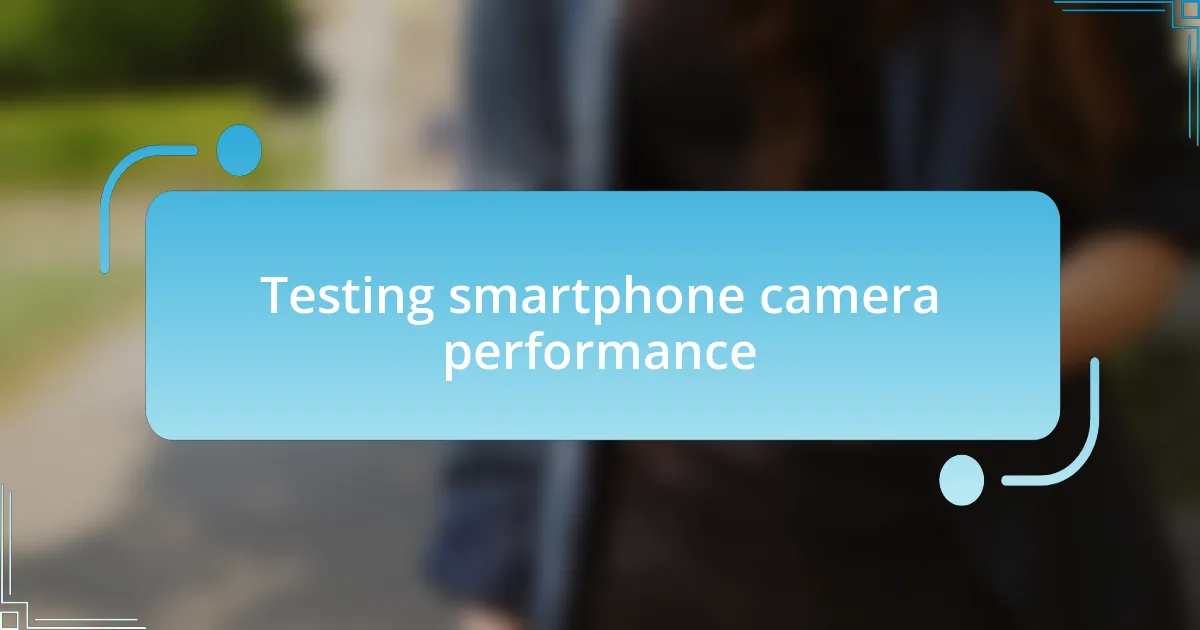
Testing smartphone camera performance
When I began testing smartphone camera performance, I found myself drawn to specific scenarios that really challenged each device. For instance, during a sunset at the beach, I took apples-to-apples shots of the same scene with different smartphones. That moment of seeing how each phone handled the rich colors and varying light was a revelation. Which one captured the depth and vibrancy best? It was almost like a mini showdown.
I also made it a point to take photos in low-light conditions, an area where many smartphones falter. I remember standing in a dimly lit café, the warm light of the hanging bulbs flickering above. The difference in how each smartphone performed was striking. One managed to bring out the details without a grainy texture while another struggled, leaving me with disappointing, washed-out images. Isn’t it interesting how lighting can completely alter the outcome of a photo?
Sometimes, I even included playful elements in my testing. For example, I spontaneously snapped photos of my dog playing in the backyard. The challenge of capturing those rapid movements while maintaining clarity revealed much about each camera’s autofocus capabilities. I found myself cheering for the one that captured his playful leaps perfectly, reflecting just how much I value sharpness and focus in everyday moments. How often do we overlook these small, yet impactful tests in our assessment of smartphone cameras?
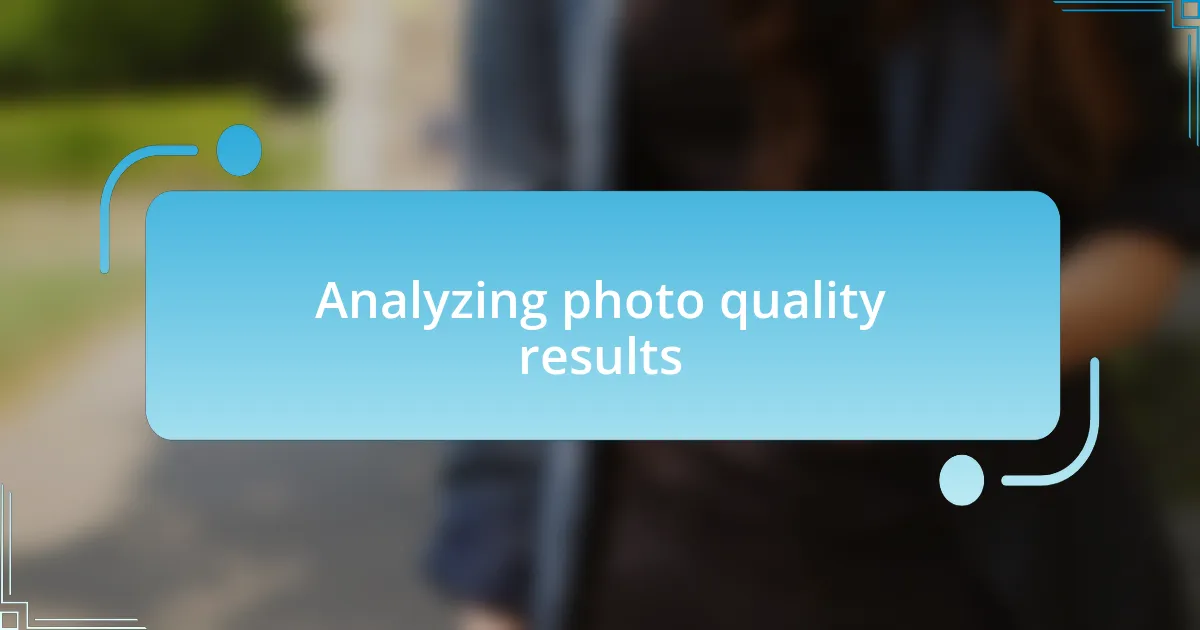
Analyzing photo quality results
When I reviewed the photo quality results, I noticed subtle differences that spoke volumes about each camera’s capabilities. For instance, I vividly recallseeing a shot of the beach at sunset that captured not just the colors, but the mood of the moment. One smartphone brought the scene to life, with hues so vibrant they felt almost like a painting, while another fell flat, making the scene seem dull. Why does it matter? It’s all about experiencing the moment through the lens.
In comparing low-light results, I took a spontaneous shot during a cozy dinner with friends. The first smartphone did an incredible job of preserving the warm ambiance, allowing us to see the smiles and details of the evening clearly. On the other hand, the other phone produced a grainy mess that felt like a distant memory rather than a cherished moment. Isn’t it fascinating how our cameras can either enhance our memories or distort them?
I also found myself curious about how well each camera handled dynamic scenes. One evening at the park, I snapped pictures of children at play, and the differences in motion capture were telling. The smartphone that managed to freeze the moment in crisp detail left me reflecting on how I want to remember those joyful times. It’s clear that photo quality isn’t just about technical specs; it’s about storytelling through imagery.
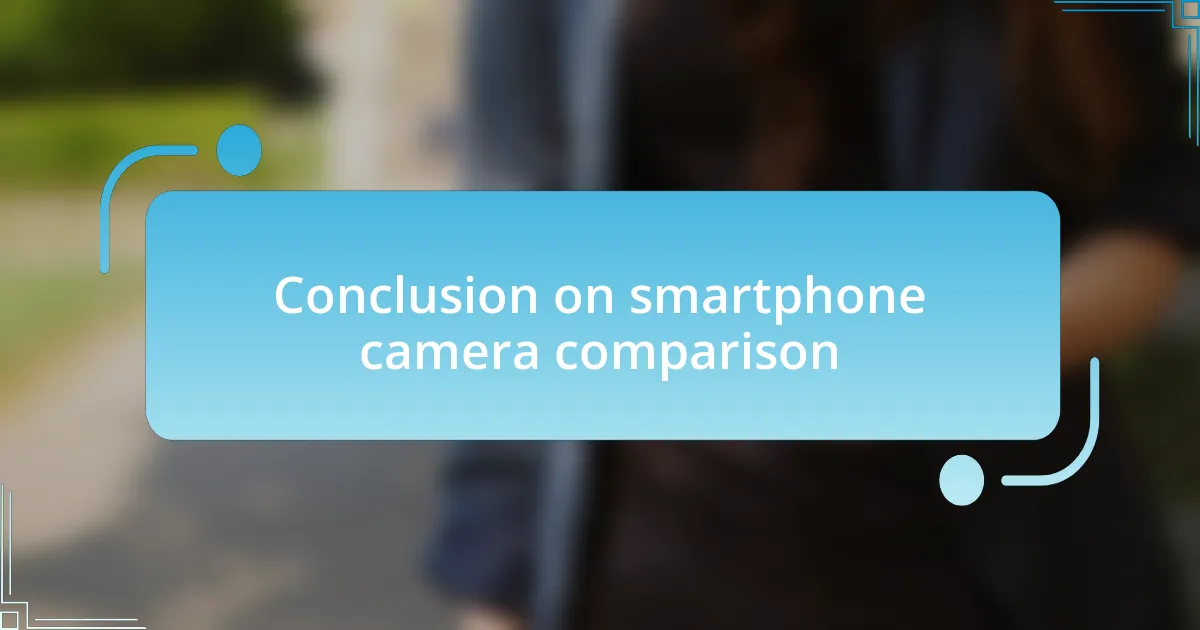
Conclusion on smartphone camera comparison
When I wrapped up my smartphone camera comparison, it struck me how each device left its mark on my memories. For instance, an impromptu hike led me to capture the breathtaking view of a mountain vista—one camera brought out every shade of green in the trees, while the other dulled the scene, stripping away its vibrancy. How often do we overlook the impact our cameras have on not just the photos we take, but how we feel about those moments later?
Reflecting on my experiences, it became clear that the best smartphone camera is the one that captures not just an image but a feeling. During a recent family gathering, one smartphone immortalized the laughter and joy around us, while another struggled to convey the warmth of the occasion. It made me wonder, isn’t photography an emotional dialogue?
Ultimately, while technical specifications and features have their place, my journey illustrated that the heart of smartphone photography lies in personal connection. The moments that resonate most with us are those where the camera feels intuitive, enhancing our storytelling. In the end, it’s not just about pixels and lenses; it’s about how we choose to remember our lives.











